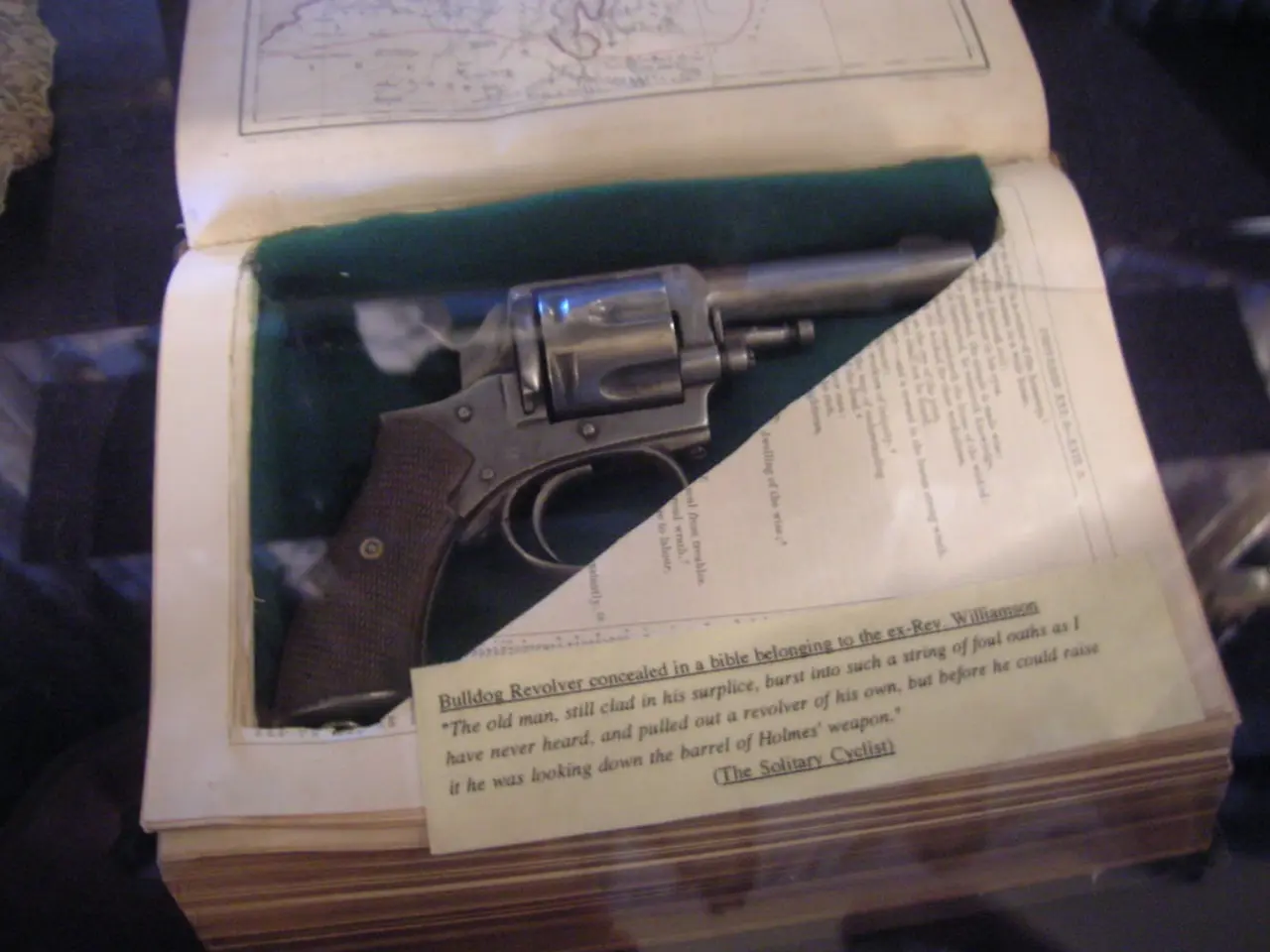Statistics Regarding the Vigilante With a Firearm
In a world where the narrative of gun violence is often skewed towards harm and victimization, investigative reports have revealed a significant gap in the coverage of defensive gun use (DGU) cases. This omission, largely due to the FBI and mainstream media, has led to a distorted understanding of gun violence statistics and a biased public perception.
A 2013 hidden-video sting operation unveiled the hesitance of pro-gun-control New York journalists to post a sign stating "THIS HOME IS PROUDLY GUN FREE," expressing concerns about inviting someone with a gun. Fast forward to 2012, a 12-year-old Oklahoman girl named Kendra St. Clair used her mother's 40-caliber Glock to shoot a home invader, causing him to flee and leaving her scared but unharmed. Instances like these, where armed citizens have prevented crimes, are seldom reported and acknowledged.
John Stossel, a renowned journalist, has released an investigative report titled "The FBI and Media Don't Tell You How Many Lives Guns SAVE." The report highlights the FBI's undercounting or narrow definition of incidents where armed citizens have stopped attacks, such as the case where only 4 out of 61 active shooter events stopped by armed citizens were reported in 2021.
Research by scholars such as John Lott suggests that defensive gun use occurs between 1 and 2.5 million times annually in the U.S., often without shots being fired. Yet, these instances rarely receive proportional media coverage or official acknowledgement, contributing to a public understanding that gun use is almost exclusively harmful.
Political and institutional factors also play a role in this underreporting. Shifts in federal agencies' leadership and priorities, such as changes at the Bureau of Alcohol, Tobacco, Firearms and Explosives (ATF) or removal of public health advisories on gun violence, can impact how data is collected and shared publicly.
The reputation of guns precedes them, making it unlikely that every incident involving guns fired in self-defense would be reported and recorded properly. For instance, the horrid Pulse nightclub massacre in Florida in 2016 claimed 49 lives and received extensive coverage, but a similar incident at a South Carolina nightclub a week later, where a "good guy with a gun" stopped the shooter before more people were killed, received little coverage.
Assault and robbery rates are lower when victims are armed with a gun, according to criminologist Gary Kleck. Kleck, a Democrat and ACLU member, once estimated that 2.5 million Americans each year use guns for self-defense. Despite this, mass shootings receive extensive news coverage, while incidents where good citizens with guns prevented potential mass shootings are often ignored.
Incidents such as the one in Palmview, Texas, where an 11-year-old boy faced off against two armed and masked illegal aliens who had broken into his home, or the Titusville, Fla., elementary school event where a person carrying a concealed firearm legally stopped a criminal before any innocents were killed, are examples of the effectiveness of "good guys with guns."
However, the debate is not without its complexities. Leftists acknowledge that a good guy with a gun can be effective, but question whether every bad guy is an uber-skilled genius and every good guy an incompetent moron. They also question why they worry about a bad guy with a gun if a good guy with a gun cannot be effective.
In conclusion, the omission of defensive gun use cases by the FBI and media leads to an incomplete picture of gun violence, emphasizing victimization and perpetrator-centric narratives while underrepresenting instances where armed citizens have prevented crimes. This affects public perception, potentially shaping policy based on incomplete data. It is crucial to strive for a more balanced and comprehensive understanding of gun violence statistics to inform policy decisions effectively.
[1] Source: The New American [2] Source: The New American [3] Source: The New American [4] Source: The New American
- Despite the increasing number of instances where armed citizens have thwarted crimes, a gap exists in the reporting and acknowledgement of these events, particularly in education-focused outlets that often cover articles related to general-news, crime-and-justice, and politics.
- The underreporting of defensive gun use cases in the mainstream media can lead to flawed public perceptions, distorting truth and perpetuating the notion that guns are only associated with harm and victimization in our society.
- Scholars and investigative journalists have highlighted the role politics and institutional factors play in the underrepresentation of defensive gun use instances, which can have far-reaching consequences for the interpretation and policymaking of gun violence statistics.








